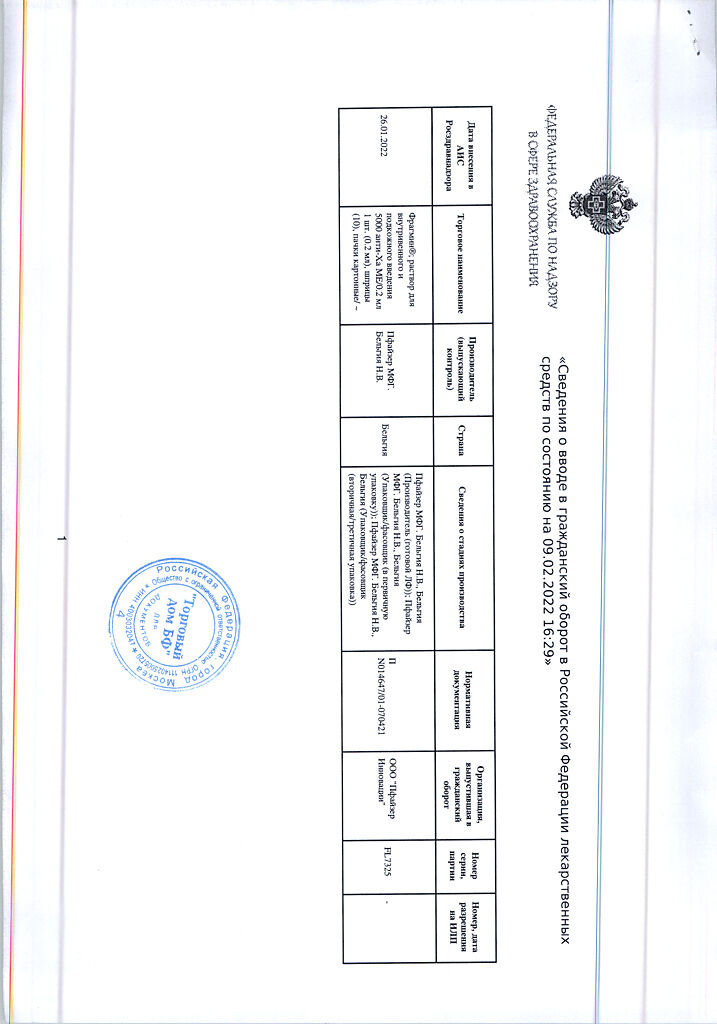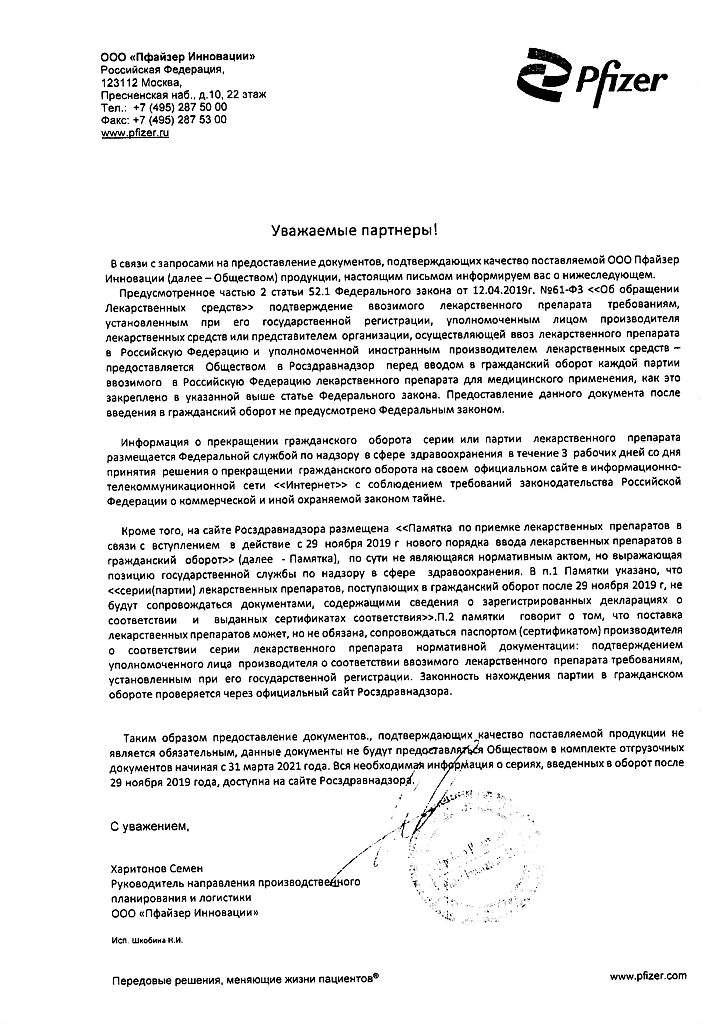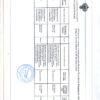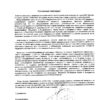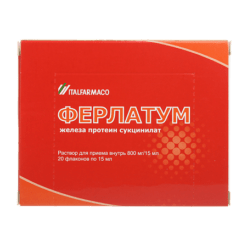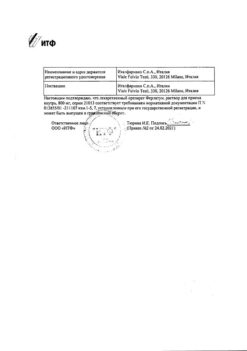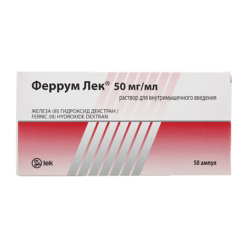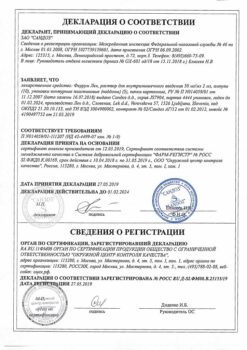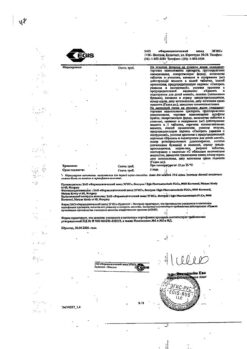No products in the cart.
Fragmin, 5000 anti-xa me/0.2 ml 0.2 ml syringes 10 pcs.
€112.06 €93.39
Description
Fragmin is a direct-acting anticoagulant.
It is a low molecular weight heparin isolated by controlled depolymerization (with nitric acid) of sodium heparin from pig small intestinal mucosa and further purified by ion-exchange chromatography. It consists of sulfated polysaccharide chains having an average molecular weight of 5,000 dalton, with 90% having a molecular weight of 2,000 to 9,000 dalton; the degree of sulfation is 2 to 2.5 per disaccharide.
Binds plasma antithrombin, whereby it inhibits factor Xa and thrombin activity.
The anticoagulation effect of dalteparin sodium is primarily due to inhibition of factor Xa; it has little effect on the clotting time. Compared with heparin, it has little effect on platelet adhesion and thus has less effect on primary hemostasis.
Indications
Indications
– acute deep vein thrombosis;
– pulmonary embolism;
– prevention of blood coagulation in the extracorporeal circulatory system during hemodialysis or hemofiltration in patients with acute or chronic renal failure;
– prevention of thrombus formation during surgical interventions;
– unstable angina and myocardial infarction (without a Q wave on the ECG).
Pharmacological effect
Pharmacological effect
Fragmin is a direct-acting anticoagulant.
It is a low molecular weight heparin isolated through the process of controlled depolymerization (with nitrous acid) of sodium heparin from the mucous membrane of the small intestine of pigs and subjected to additional purification using ion exchange chromatography. Consists of sulfated polysaccharide chains having an average molecular weight of 5,000 daltons; while 90% have a molecular weight from 2000 to 9000 daltons; degree of sulfation – from 2 to 2.5 per disaccharide.
Binds plasma antithrombin, as a result of which it inhibits the activity of factor Xa and thrombin.
The anticoagulant effect of dalteparin sodium is primarily due to the inhibition of factor Xa; the blood clotting time is slightly affected. Compared to heparin, it has a weak effect on platelet adhesion and, thus, has less effect on primary hemostasis.
Special instructions
Special instructions
The drug cannot be administered intramuscularly!
When administering neuraxial anesthesia (epidural/spinal anesthesia) or performing a lumbar puncture in patients who are receiving anticoagulant therapy or who are scheduled to undergo anticoagulation therapy using low molecular weight heparins to prevent thromboembolic complications, there is an increased risk of developing a spinal or epidural hematoma, which in turn can lead to prolonged or permanent paralysis. The risk of such complications increases when using permanent epidural catheters for the administration of analgesics or while using drugs that affect hemostasis (NSAIDs, platelet function inhibitors, other anticoagulants). The risk also increases with trauma and repeated epidural or lumbar punctures. Such patients should be under constant observation for timely detection of pathological neurological symptoms. If neurological pathology occurs, urgent decompression of the spinal cord is indicated.
There are no clinical data on the use of Fragmin for pulmonary embolism in patients with circulatory disorders, arterial hypotension or shock.
If thrombocytopenia develops rapidly during Fragmin therapy or with thrombocytopenia with a platelet count of less than 10,000/μl, it is recommended to conduct an in vitro test for antiplatelet antibodies in the presence of heparin or low molecular weight heparins. If the results of such an in vitro test are positive or equivocal, or no testing has been performed at all, then Fragmin should be discontinued.
Monitoring the anticoagulant activity of Fragmin is usually not necessary. However, it should be carried out when using Fragmin in patients with below normal body weight or obesity, as well as with an increased risk of bleeding or thrombosis. Blood samples for analysis of Fragmin activity should be taken during the period when the maximum concentration of the drug in the blood plasma is reached (3-4 hours after subcutaneous injection).
To determine anti-Xa activity, the method of choice is laboratory tests that use a chromogenic substrate. Activated partial thromboplastin time (aPTT) and thrombin time tests should not be used because these tests are relatively insensitive to the activity of dalteparin sodium. Increasing the dose of Fragmin in order to increase the aPTT may lead to bleeding.
The units of action of Fragmin, unfractionated heparin and other low molecular weight heparins are not equivalent, therefore, when replacing one drug with another, it is necessary to adjust the dosage regimen.
Use in pediatrics: There is only limited information about the safety and effectiveness of Fragmin in pediatric practice. When using Fragmin in children, it is necessary to monitor the level of anti-Xa activity.
Active ingredient
Active ingredient
Dalteparin sodium
Composition
Composition
0.2 ml of solution for intravenous and subcutaneous administration contains:
dalteparin sodium 5000 IU anti-Xa.
Excipients:
sodium chloride,
sodium hydroxide or hydrochloric acid q.s.,
water d/i.
Pregnancy
Pregnancy
When used in pregnant women, there were no adverse effects on the course of pregnancy, as well as on the health of the fetus and newborn. When using Fragmin during pregnancy, the risk of adverse effects on the fetus is assessed as low. However, since the possibility of adverse effects cannot be completely excluded, Fragmin can be prescribed only for strict indications when the expected benefit to the mother outweighs the potential risk.
If it is necessary to use Fragmin during pregnancy, it is necessary to monitor the anticoagulant activity of the drug.
Experimental studies did not reveal any teratogenic or fetotoxic effects of the drug.
It has not been established whether dalteparin sodium is excreted in breast milk.
Contraindications
Contraindications
– bleeding (clinically significant, for example from the gastrointestinal tract against the background of gastric and duodenal ulcers, intracranial bleeding);
– history of immune thrombocytopenia (caused by heparin) or suspicion of it;
– recent injuries or surgical interventions on the central nervous system, organs of vision, hearing;
– septic endocarditis;
– pronounced disorders of the blood coagulation system;
– hypersensitivity to dalteparin sodium or other low molecular weight heparins and/or heparin.
Due to the high risk of bleeding, Fragmin in high doses (used for example to treat acute deep vein thrombosis, pulmonary embolism, unstable angina and myocardial infarction without a Q wave on the ECG) should not be prescribed to patients who are planning to undergo spinal or epidural anesthesia, or other procedures involving lumbar puncture.
Side Effects
Side Effects
From the hematopoietic system and blood coagulation system: rarely – reversible non-immune thrombocytopenia, bleeding (when used in high doses); in some cases – immune thrombocytopenia (with or without thrombotic complications); development of spinal or epidural hematoma.
From the digestive system: in some cases – a transient increase in the activity of liver transaminases.
Local reactions: hematoma at the injection site, pain; rarely – skin necrosis.
Other: in some cases – anaphylactic reactions.
Interaction
Interaction
When used simultaneously with drugs that affect hemostasis, such as NSAIDs, thrombolytic agents, other anticoagulants, and platelet function inhibitors, the anticoagulant effect of Fragmin may be enhanced.
When Fragmin is used together with antihistamines, cardiac glycosides, tetracyclines, and ascorbic acid, the effect of Fragmin may be weakened.
Pharmaceutical interaction. Fragmin is compatible with isotonic sodium chloride solution (9 mg/ml), isotonic glucose solution (50 mg/ml).
Overdose
Overdose
Treatment: The anticoagulant effect of dalteparin sodium can be reversed by administration of protamine sulfate (rescue drug).
1 mg of protamine partially inhibits 100 IU of dalteparin sodium (and although the induced increase in clotting time is completely neutralized, 25 to 50% of the anti-Xa activity of dalteparin sodium is still retained).
Storage conditions
Storage conditions
Store out of the reach of children at a temperature not exceeding 30°C.
Shelf life
Shelf life
3 years.
Manufacturer
Manufacturer
USA
Additional information
| Shelf life | 3 years. |
|---|---|
| Conditions of storage | Keep out of reach of children at temperatures under 30 ° C. |
| Manufacturer | Pfizer, Puerto Rico |
| Medication form | solution |
| Brand | Pfizer |
Related products
Buy Fragmin, 5000 anti-xa me/0.2 ml 0.2 ml syringes 10 pcs. with delivery to USA, UK, Europe and over 120 other countries.



